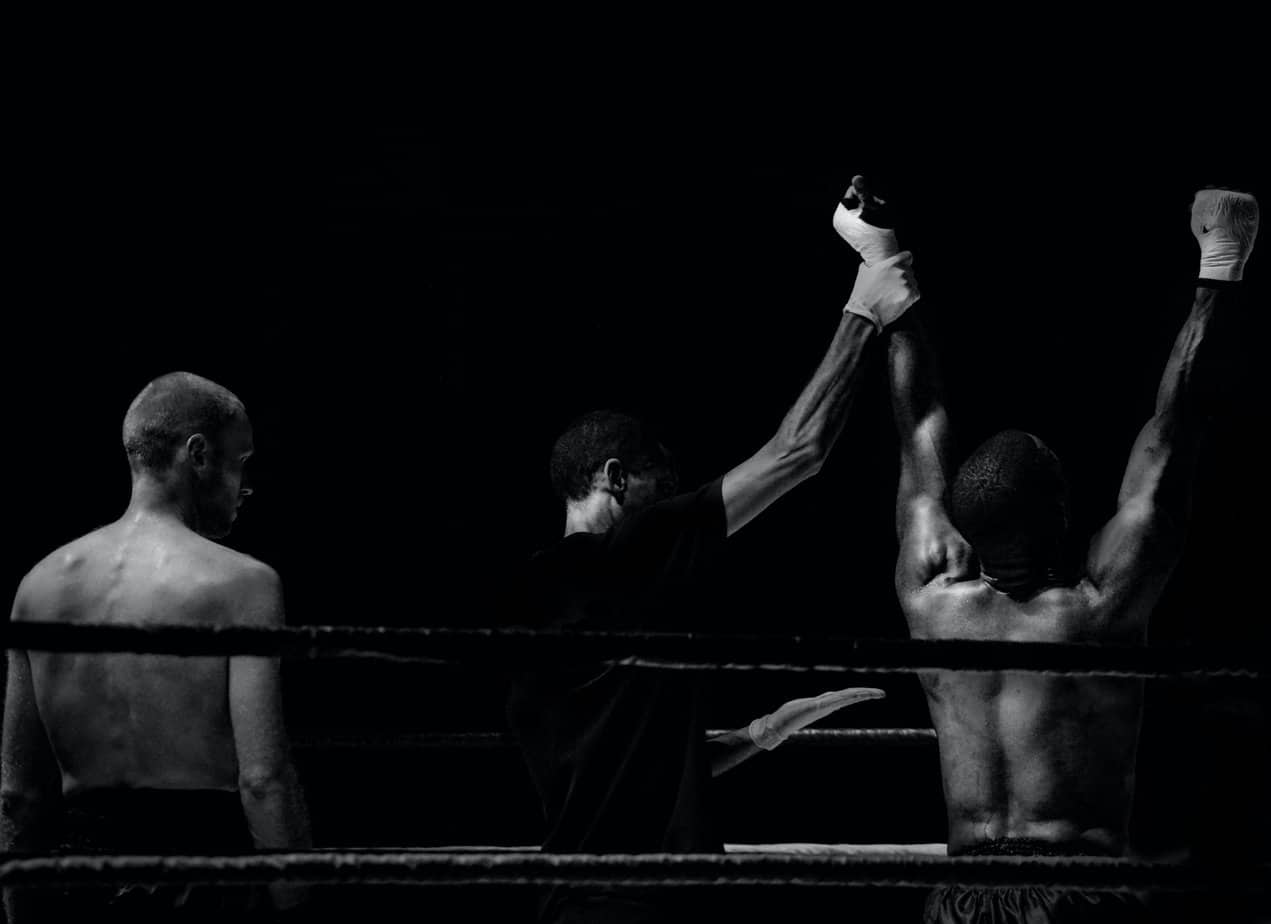Although people generally prefer to see an organised fight that ends via a knock-out (K.O.), it is much more often that both fighters stand firm on their feet after the fight is officially over. Since we have no clear winner, a decision has to be made and it is up to the judges to decide how the fight is going to end. First, we will give you a simplified answer to how kickboxing fight is scored. Then we will go through the details you should know.
Each judge must award 10 points to the winner of the round – thus the name, 10-point system – and less to the loser. Of course, the winner can get less than 10 points if there have been deductions during the round, but if the round was completely regular – the winner must get 10 points.
That is a very simplified answer, and we have to explain it in more detail. So, today’s topic is about how the judges decide a fight where both fighters are still standing after the fight is over. Of course, they use a point system with a predetermined ruleset and we are going to show you how the scoring system in kickboxing actually works and how it was developed.
How Can a Kickboxing Fight End?
Although all martial arts have their own specific scoring systems and most of them are different, kickboxing is an exception there. Why? Well, due to the similarities between modern Western kickboxing and regular kickboxing, the scoring system is practically identical.
Like in boxing, a kickboxing fight can end in three possible ways – with a knockout, with a disqualification or with a judges’ decision. The first two scenarios are simple.
If we’re talking about a legal knockout, the winner is, of course, the last fighter standing, since the opponent is unconscious and thus unable to continue the fight.
A knockout can either be “normal” (one fighter knocks the other unconscious and he cannot continue the fight) or technical (when the referee decides it is not safe for a fighter to continue, despite him not losing his consciousness); there is also a very rare scenario when neither of the fighters can continue due to a simultaneous, two-sided knockout, which is called a double knockout.
A knockout is a fight-ending situation, just like a disqualification, which happens when a fighter commits a very serious breach of the rules of fighting.
Now, while applying all this knowledge about knockouts, remember that your safety is paramount. Strengthening your offense is beneficial, but it’s equally important to defend effectively, and for that, you’ll need the Best Kickboxing Headgear.”
But, if neither of these scenarios happen, a decision must be made using the points each judge gave to the fighters during the course of the fight. There are three ringside judges who observe the match and award points. The points are later added and each judge declares a winner based on the scoring. The scores of all three judges are then shown and the winner is decided based on these scores.
A match can either have a winner (via unanimous, majority or split decision) or be declared a draw (same possibilities). Modern kickboxing uses a 10-point system to determine the final scores, but more on that later.
These are the basics. Further below, we are going to discuss the development of the modern system and how it actually functions.
As you understand the importance of grasping the kickboxing scoring system and the subtleties of each point awarded, acquiring top-notch equipment becomes equally important. Ensure every strike you land counts, and protect your hands with the Best Kickboxing Gloves, which come highly recommended by experienced combat veterans.

History of Kickboxing Scoring System
When talking about the history of the scoring system in modern kickboxing, we have to go back to the history of the scoring system in regular boxing. With one small difference – we don’t have to go way back in history. Namely, kickboxing is a relatively new sport compared to boxing.
The initial version of kickboxing appeared in Asia during the 60s, but the sport really became popular during the 70s, when it came to the United States of America. The Americans redefined some of the rules of Oriental kickboxing and they made a “Westernized” version that became what we perceive as modern kickboxing.
So, where do we actually start? As we know, the twentieth century introduced the first scoring system in classical boxing, which was based on scoring rounds and determining the winner by more rounds won.
We have to say, here and now, that the rules of modern boxing are based on the rules provided by John Douglas, 9th Marquess of Queensberry, the famous Scottish nobleman who is considered to be the “father of modern boxing”. Although his rules laid the foundations for modern boxing, interestingly enough – they did not contain a predefined scoring system, which was left to the individual organisations to determine themselves.
This, of course, caused chaos, as each national organisation had its own rules, which lead to the necessity of developing a universal scoring system. That finally happened in 1968, when the World Boxing Council (WBC), introduced the modern 10-point system, used universally in modern boxing. The Marquess of Queensberry rules, thus ironically, helped developed a universal scoring system by not defining one.
When the 10-point system was developed in boxing and unified scoring, it became popular in other combat sports as well. With slight variations, it was adopted into other Western combat sports, with kickboxing being one of them. The influence of classical boxing on modern Western combat sports is truly enormous and evident, so it is in no way strange that kickboxing adapted the globally popular 10-point system.
This historical overview, although more related to modern boxing, was presented so that you can see how the initial system developed and why kickboxing uses the same system today.
So, this is how the system developed. Now, we are going to see how it actually functions.
The 10-Point Scoring System in Kickboxing
The scoring in modern kickboxing is entrusted to three ringside judges approved by the commission. They are seated some distance from each other and they are not allowed to either consult each other or share their scores during the match. This was decided to avoid score fixing.
The judges carefully watch and score each round separately. After each round, each judge gives his scores to the referee, who then hands them out to a clerk responsible for recording them and adding the final scores. Each judge must award 10 points to the winner of the round – thus the name, 10-point system – and less to the loser. Of course, the winner can get less than 10 points if there have been deductions during the round, but if the round was completely regular – the winner must get 10 points.
The most common score is a 10-9. Other common scores include a 10-8 and a 10-7, but such scores are usually the result of point deductions for knockdowns, since the judges must deduce a point each time a fighter is knocked down. If a round is deemed to have been even, the judges can score it 10-10. The winning fighter could get 9 points or less, but only as a penalisation for fouls committed during the round; judges themselves can penalise the fighter, but the referee can also do it, but only after the round is complete.
If a bout is completed and there was neither a K.O. nor a disqualification, the scores are all added up together by the clerk, who then gives the final results to the referee, who, then, declares the winner. This is how the 10-point system functions. The decisions are listed above.
Although the official and most widely used one, the 10-point system is not the only one. Some organisations use a 5-point, 3-point or even a 1-point system, but these are rare exceptions.
And that’s it for today. We have covered the basics of the scoring system used in modern kickboxing. We hope this article has been helpful to you and that you will follow us for more of the same. If you stumbled upon this article, there is a good chance that you are a kickboxing enthusiast, so, be sure to check out our series of articles about kickboxing.
Also, as this article contained a lot of information, and not so much of entertainment, for the end, we bring you a compilation of some of the craziest moments in kickboxing. Enjoy!

